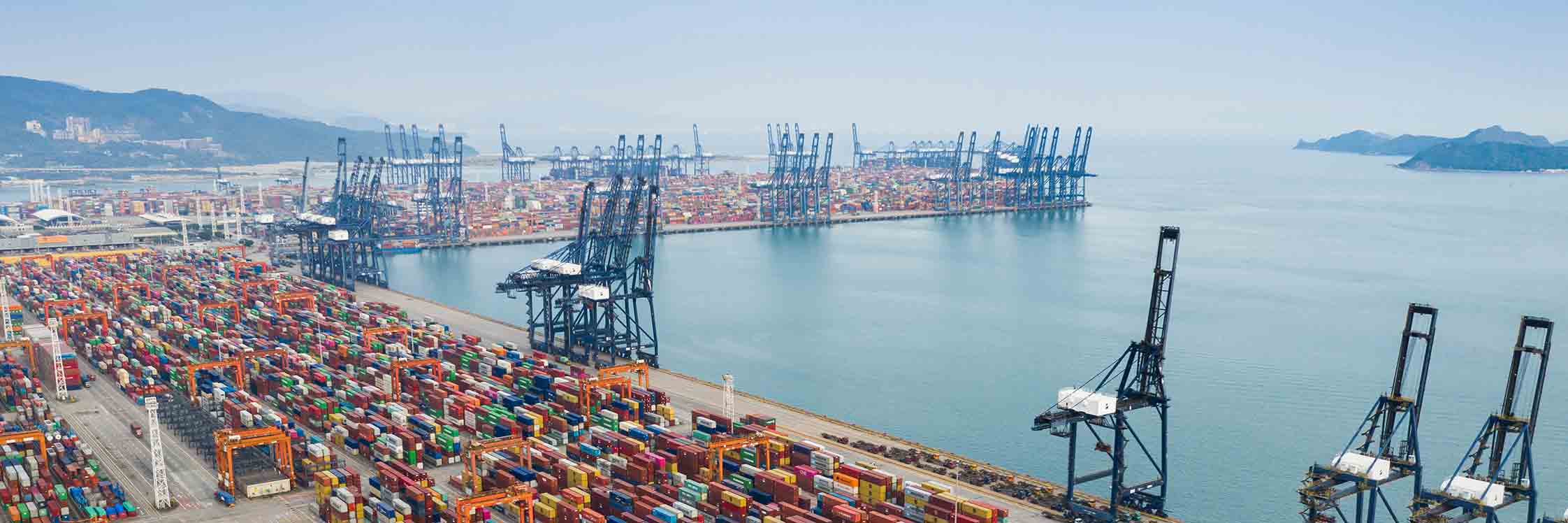Tariffs: what they are, how they work, and how they affect the stock market
Understand what tariffs are and how they work, how tariffs affect the stock market, and how tariffs may impact investment portfolios in this shifting environment.
- Tariffs are a tax on goods imported from other countries. The fee is paid at the port or other point of entry for the goods, by the company doing the importing.
- Tariffs may be imposed for a variety of purposes, from protecting domestic industries, penalizing foreign governments, or fostering national security goals.
- Markets have adjusted to tariffs in the past, though prolonged uncertainty about the depth and breadth of their impact could reduce investor confidence.
President Trump announced a broad swathe of new tariffs on April 2, impacting U.S. trading partners across the world. But what are tariffs? And how will they impact the economy and stock markets? Read on to find out.
The impact of tariffs
Your browser doesn’t support video.
What are tariffs and how do they work?
Tariffs are a tax on goods imported from other countries. The fee is paid at the port or other point of entry for the goods, by the company doing the importing. The moneys collected go to the federal government, and can be used to pay for federal spending.

What are tariffs and how do they impact the stock market?
A tariff is a tax on goods imported into a country. The tax is paid by the importing firm, and the money collected goes to the government that imposed the tariff. Tariffs don’t impact the stock market directly. However, tariffs may have an indirect impact on stocks because they tend to raise prices for imported goods. Such goods may include raw materials and other components of manufactured items, even if the factory itself is located within the U.S. The increased cost of materials and components may force firms to raise prices and/or decrease their profits, which may in turn cause their stock price to fall.
Imposing a tariff can serve several purposes. Imposing a tax on an imported good tends to raise its price, making locally made versions of the product cheaper in comparison. Imposing tariffs may thereby help protect domestic manufacturers.
Source: U.S. Census, https://www.census.gov/foreign-trade/statistics/highlights/topcm.html
By reducing the sales of overseas manufacturers, tariffs may also harm the economy of the exporting country. Tariffs may sometimes be imposed with the intent of penalizing other countries for actions a government disapproves of. For example, since 1964, the U.S. has charged a 25% tariff on imported light trucks. The tariff was originally intended to penalize European governments that the U.S. administration claimed were allowing European chicken producers to dump their products into the U.S. market at artificially low prices.
Finally, tariffs may also be imposed to help protect domestic producers of products that are essential to maintaining national security, like military equipment or telecommunications components. The Biden administration imposed tariffs on Chinese manufacturers of solar panel components and semiconductors, for example, to boost U.S. manufacturing in those industries.
Related insights
View all





How do tariffs affect the stock market?
Tariffs, being a tax on the price of goods and services, don’t directly raise or lower stock prices. However, they do impact companies’ bottom lines, which in turn impact investors' expectations for future growth of both individual companies and the larger economy. Tariffs can affect stock prices by reducing profit margins for firms, decreasing consumer spending, increasing inflation, and decreasing economic growth.
While the effects of tariffs may take months or years to play out, investors' expectations and assumptions may shift as soon as new information emerges, meaning that stocks often “price in” the impact of policy changes before the changes themselves are underway. The announcement by President Trump of sweeping global tariffs on April 2, caused the S&P 500 to decline by 4% on April 3, with other international markets following suit.
The U.S. government hasn’t imposed a similarly broad-ranging set of tariffs for nearly a century. Global trade networks are now far more integrated than they were at that time; large multinational companies often manufacture parts for the same product in several different countries. That means that the long-term impact of tariffs is difficult to estimate, and stock prices may shift rapidly as new information continues to emerge.
Other countries could enact their own tariffs against the United States in response, which may induce further escalation. President Trump may also act to reduce or delay tariffs in return for trade concessions. Prolonged uncertainty about the extent and duration of tariffs could reduce corporate and investor confidence and impact market prices. Markets have shown resiliency in response to prior tariffs imposed by the first Trump and Biden administrations in recent years.
Some sectors and industries tend to be more greatly impacted by tariffs than others. In general, manufacturing and industrial firms that are dependent on global supply chains or export markets may face increasing input costs. Companies whose suppliers are primarily domestic or that have flexibility in which suppliers they source from may prove more resilient.
Agriculture and commodities sectors may also be affected by tariffs, with American farm products frequently the target of retaliatory tariffs from other countries. For example, U.S. soybean exports to China have dropped significantly recently as China responded to previous U.S. tariffs with tariffs of its own.
How do tariffs affect investment portfolios?
The magnitude and extent of tariffs are key to determining whether they have long-term effects on the economy and investment portfolios. If tariffs help raise prices and slow growth, the economy could enter stagflation. Previous periods of stagflation have generally produced lower returns for both equities and fixed income. If inflation remains moderate and economic growth persists, assets such as commodities and precious metals, non-U.S. equities, and floating-rate debt might be well placed to see gains.
What strategies can advisors use to mitigate client risk related to tariffs? And is now the right time to get out of U.S. equities?
When it comes to mitigating risk, diversification within and between asset classes can help protect a portfolio against inflation. When selecting stocks, maintaining a balanced allocation among value-oriented dividend-yielding stocks as well as growth and among international stocks as well as U.S.-listed ones may help mitigate risks. Investors may also wish to review their cash holdings as a percentage of their portfolio, and consider higher-yielding, intermediate-term bonds.
Proceeding with caution might be better than making any dramatic moves. While initial reaction to the announcement was negative, considerable uncertainty remains about the duration and long-term impact of tariffs. In the past, markets have performed strongly in the next 12 months following peaks in bearish sentiment. Recoveries often start just as abruptly as declines, and missing out on the early stages of a rally can have lasting negative effects on portfolio performance.
Maintaining exposure to equities as part of a portfolio has also been essential to obtaining returns that exceed the rate of inflation over time.
Next steps to consider

Asset Allocation Research Team (AART)
Access economic, fundamental, and quantitative analysis from our Asset Allocation Research Team.
Learn more

Domestic Equity
Target your clients’ investment needs with our broad lineup of domestic equity solutions.
Learn more

Quantitative Investing
Find out how a blend of human insight, data, and technology can help uncover opportunity for your clients.
Learn more
1 Source: U.S. Census as of April 2025.
S&P 500® index is a market capitalization-weighted index of 500 common stocks chosen for market size, liquidity, and industry group representation to represent U.S. equity performance.
Diversification does not ensure a profit or guarantee against a loss.






